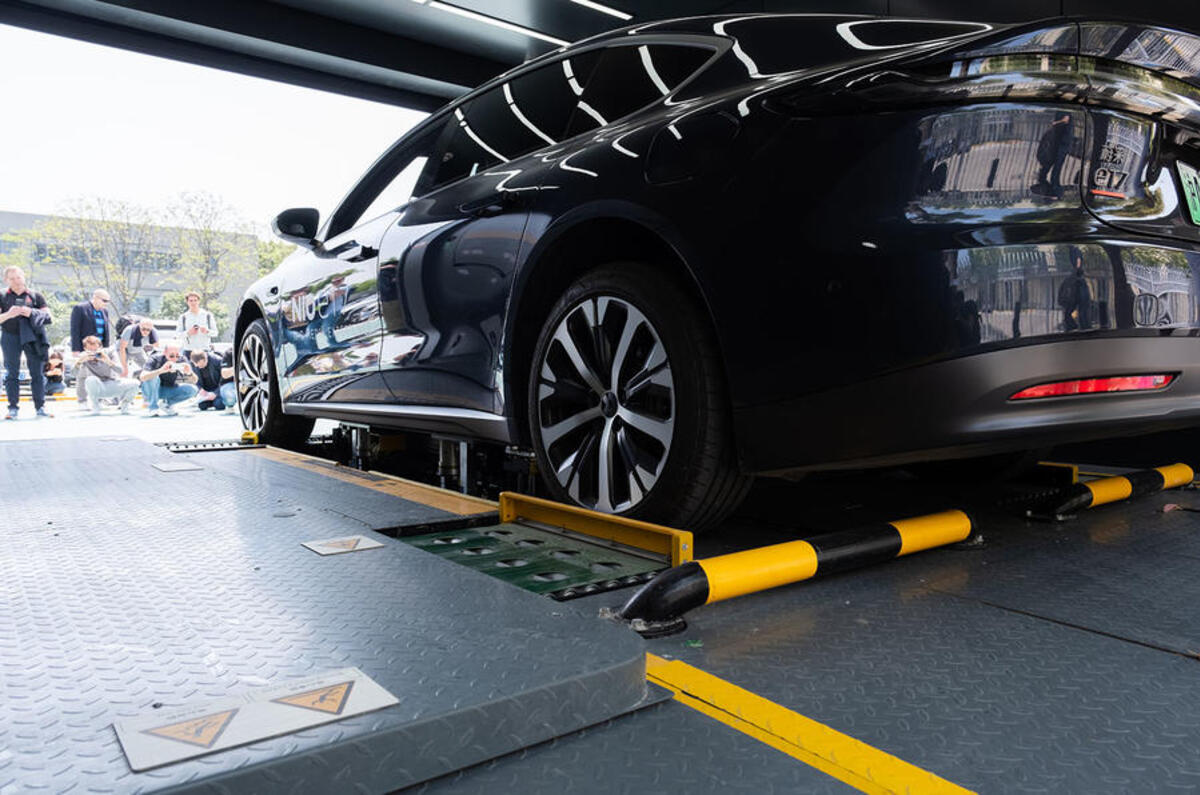Chinese car giants Geely and Nio have announced a partnership that will enable the pair to co-operate on battery-swapping technology.
The end goal is to develop battery-swappable electric cars that are compatible with each other’s systems, so drivers of Geely and Nio vehicles could use the same batteries and battery-swapping stations.
Nio’s latest Power Swap Stations are bound for the UK, but the date is unknown. Nio has more than 1300 Power Swap Stations in China and 13 stations across Norway, the Netherlands and Germany.
Geely, whose subsidiaries include Volvo and Zeekr (as well as a 50% stake in Smart), has around 300 swapping stations in China. It’s also the second car maker to sign a battery-swapping agreement with Nio after Changan Automobile announced a similar deal earlier in 2023.
Geely and Nio will adopt a “co-investment, co-construction, shared, co-operative” model, according to a joint press release.
Battery swapping
Battery swapping has long been touted as a solution for range anxiety, alleviating pressure on the charging network, and for reducing electric car prices. Swapping is said to be roughly the same cost as using a Tesla Supercharger.
From a driver perspective, it’s pretty simple. Instead of plugging into a charger at a motorway service station, you simply swap your depleted battery out for a charged one. Nio currently allows drivers to buy the batteries outright, or to lease them. Both types are allowed at swapping stations.
Nio launched its third generation of Power Swap Stations in 2023. They can replace a battery pack in under five minutes and are already operational in China.
A production plant for Europe, in Hungary, has begun making them too. MG, Fisker and Maxus all have plans for battery swapping in the future.









Join the debate
Add your comment
Nio haven't fulfilled their last publicity generating rubbish so why move onto the next one.
Sorry 405line Renault were ahead of you but dumped the car and idea several years ago when it flopped.
Yes, duly noted, however the French were reponsible for the floppy scart plug, the implementation of the swap technology is the key to it's success, it's a good idea apart from the physical aspects and possibly the need for standardization of battery types which is what I said the Germans would do eventu-ally. Just as Tesla connections appear to becomming the de-facto starndard. Remember turbos and 4ws 'flopped' when they were used previously, both revived, ironically Renault involved again.
It's the only sensible and cost effective solution to extending the range of EV and potentially extending the life of the battery itself if it then recharged optimally off-the-vehicle. I had suggested this idea previously. Apart from physical wear due to the plugging and unplugging of the battery I can't see any other negative issues with doing it.